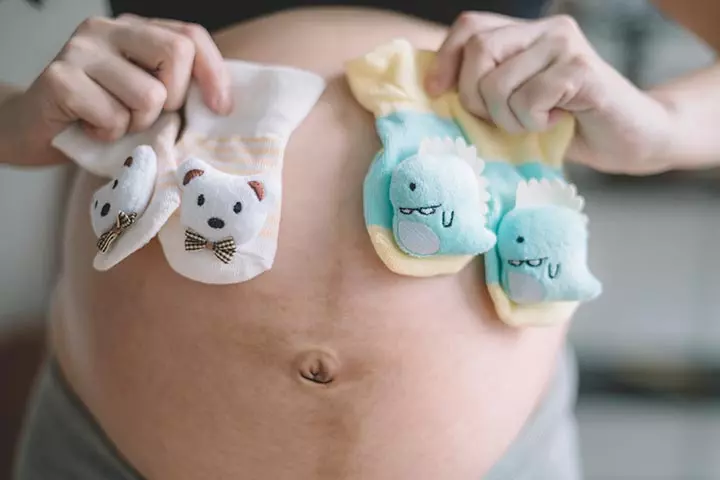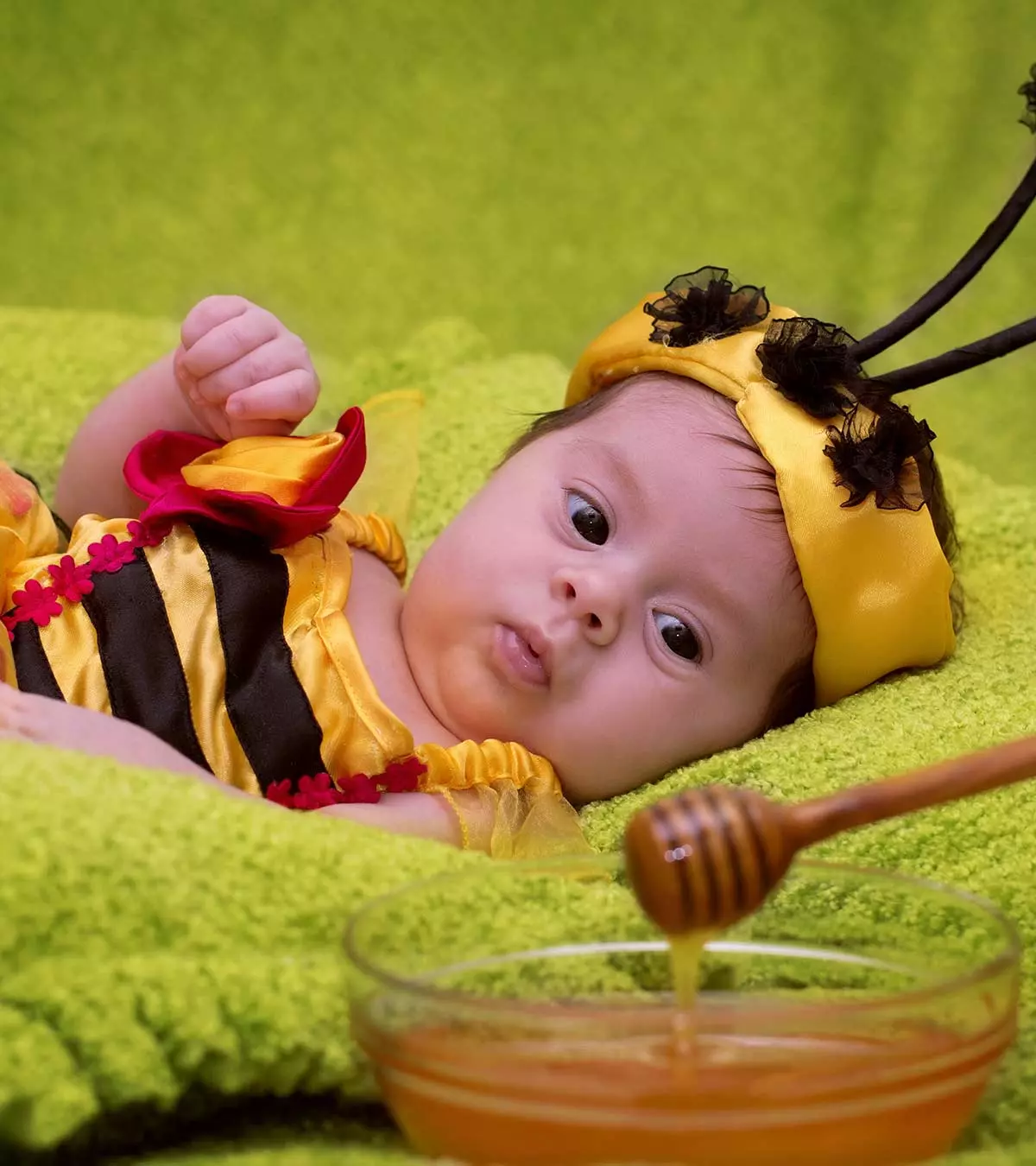
Image: iStock
The moment you announce your pregnancy, chances are that you’ll be bombarded with advice. Be it your friends, relatives, or even acquaintances, everyone will have something to tell you. Though it’s good that people care about you and your baby and want to help you out in this journey of parenthood, it might get a little confusing for you as to what to follow and what not to. Many myths related to pregnancy can be old wives’ tales and hearsay which actually doesn’t have anything to do with reality.
We’re here to bust some of those common myths that you’ve perhaps heard about childbirth and, instead, open your eyes to well-established facts. So, without further ado, let’s dive into the top ten myths about labor and delivery that you should take with a pinch of salt:
Myth 1. Some Drama Will Unfold When Your Water Breaks

Image: IStock
Oh no, our life is not what they make of it on television or in the movies — mostly not! Water breaking is a sign of labor when you reach full-term pregnancy, but it’s not a gush of a waterfall as portrayed on screen. In most cases, you’ll experience a sense of wetness or leakage of watery fluid from your nether regions (1). Also, some women may not feel their water break. Once your water breaks, you will lapse into labor, or your doctor will begin the necessary procedure to induce labor.
Myth 2. The Chances Of Having A C-Section Is Higher When You Get An Epidural

Image: Shutterstock
Epidural analgesia is known to decrease the pain of childbirth. It is a numbing medication injected into your spine that is similar to being paralyzed (until the effect of the epidural fades away) from your belly button down. An epidural keeps you awake and alert but numb throughout the baby’s delivery. While it does slow down the second stage of labor (the pushing part), researchers have dispelled the darkness around this myth long ago. They state that an epidural does not increase a woman’s probability of having a C-section (2).
Myth 3. Normal Birth Is More Painful Than A C- Section

Image: Shutterstock
Contrary to this popular belief, it’s proven that the pain of childbirth is similar in both cases. While normal birth could be painful during labor, C-section too is not without pain, especially post-surgery. Unlike normal delivery, the latter is accompanied by foot and back pain, abdominal and digestive issues, irritation, and itching around the site of surgery which is no less agonizing (3).
Myth 4. Hip Size Affects Your Childbirth Experience

Image: Shutterstock
Nope, having bigger hips doesn’t guarantee easy labor. While a large pelvic space does allow more room for your baby to pass through, large hip-width or women who look wide may have a small pelvis. Some of them could have a condition called “contracted pelvis”, where a C-section may be necessary instead of natural childbirth (4).
Myth 5. More Babies Are Born During A Full Moon

Image: Shutterstock
This one is an old wives’ tale that’s been around the block for centuries! If you’ve harbored the belief that the moon’s phase has got anything to do with your due date and are all excitedly packing for getting a hospital admission, we hate to break this to you: it’s not true! While the moon’s gravitation is strong enough to cause tides and even influence the water in our bodies, no scientific evidence proves this myth (5).
Myth 6. Passing Your Mucus Plug Means You’re Going Into Labor

Image: IStock
The mucus plug is a mass of a jelly-like substance that accumulates in the cervical canal and seals it. It acts as a barrier and keeps away infections from traveling into your uterus. While losing the mucus plug hints that your cervix is dilating, your labor could still be a long way. The mucus plug for some people comes out gradually, sometimes even without their knowledge. You don’t need to rush to a hospital unless the discharge is bright red or the amount is about two tablespoons (which often indicates complications in the placenta) (6).
Myth 7. Spicy Foods Can Induce Labor

Image: IStock
For the longest time, expecting women have believed that eating spicy food can kick-start labor. The truth is, eating spicy foods can irritate your bowel and give you heartburn, which will, in turn, impact your uterus (7). The baby will only arrive in this world when it’s ready, not if you indulge in the spiciest treats available!
Myth 8. Your Labor Will Resemble Your Mom’s

Image: IStock
People quite well accept this good ol’ myth since it’s based on our genetic makeup, but it’s not entirely accurate. While we cannot override the odds of our pelvis size, chances of preterm labor or postnatal depression resembling our mom’s, delivery experience is different for each woman (8), (9). Undoubtedly, your mom’s pregnancy can give you some insight, but your childbirth journey will be unique.
Myth 9. Twin Birth Means A C-Section By Default

Image: IStock
It’s false. Twin birth does not necessitate a cesarean. Several trials have proven that normal delivery is as safe as a cesarean for delivering twin babies (10). If your baby is breech, that is, they are positioned upside down, or there are complications where your doctor deems a C-section indispensable, normal delivery would be unsafe. Simply put, women can safely attempt a normal delivery for twin births if the first twin presents its head first.
Myth 10. You Can’t Have Normal Birth Once You’ve Had A Cesarean

Image: Shutterstock
This is another common myth that’s scientifically unestablished. With technological advances in our age, mothers are now in charge of how they wish their pregnancy and childbirth to proceed. Science confirms that mothers can choose between normal birth and C-section even if they have had a normal delivery before, provided there are no complications (11).
Myths, cultural stigma, and stereotypes surround childbirth. But these are called myths for a reason: most times they are untrue and baseless. It’s important for would-be parents to tell facts apart from hearsay and take the most logical decisions when it comes to labor and childbirth. Trust your medical advisor and engage them in conversations to learn about it. Which of the above-mentioned myths were you aware of? Do you have more such labor and delivery myths to add to this list? Do share with us in the comments below!
References
- Amniotomy
https://www.ncbi.nlm.nih.gov/books/NBK470167/ - Epidural Pain Relief During Labor Does Not Increase Chance of C-Section
https://www.nichd.nih.gov/newsroom/releases/epidural - Vaginal Delivery vs. Cesarean Section: A Focused Ethnographic Study of Women’s Perceptions in The North of Iran
https://www.ncbi.nlm.nih.gov/pmc/articles/PMC4280556/ - The Management of Labor in Contracted Pelvis*
https://www.ncbi.nlm.nih.gov/pmc/articles/PMC2079506/ - Influence of moonlight on the birth of male and female babies
https://pubmed.ncbi.nlm.nih.gov/16295726/ - Mucus Plug
https://americanpregnancy.org/healthy-pregnancy/labor-and-birth/mucus-plug/#:~:text=Passing%20a%20mucus%20plug%20is%20a%20sign%20that - Tips To Ease The Heartburn Of Pregnancy
https://www.sciencedaily.com/releases/2007/12/071208145406.htm - Maternal Health Factors as Risks for Postnatal Depression: A Prospective Longitudinal Study
https://journals.plos.org/plosone/article?id=10.1371/journal.pone.0147246 - Current understanding of genetic factors in preterm birth
https://pubmed.ncbi.nlm.nih.gov/15715591/ - Delivering Twins Does Not Require A C-Section
https://www.acsh.org/news/2013/10/03/delivering-twins-does-not-require-a-c-section - Vaginal Birth After Cesarean Delivery
https://www.ncbi.nlm.nih.gov/books/NBK507844/
Community Experiences
Join the conversation and become a part of our nurturing community! Share your stories, experiences, and insights to connect with fellow parents.












